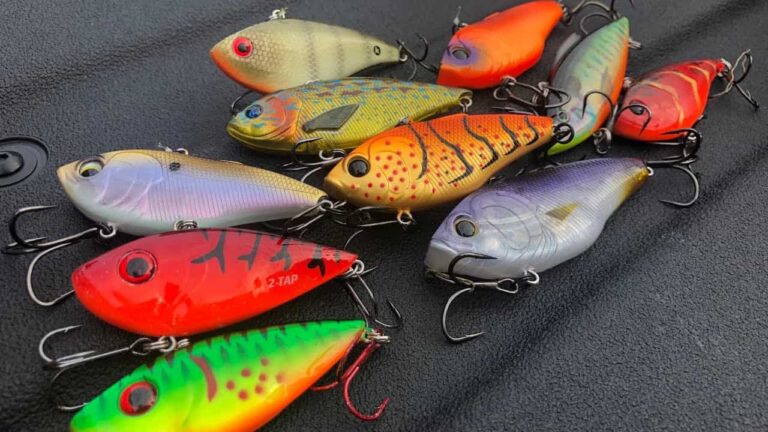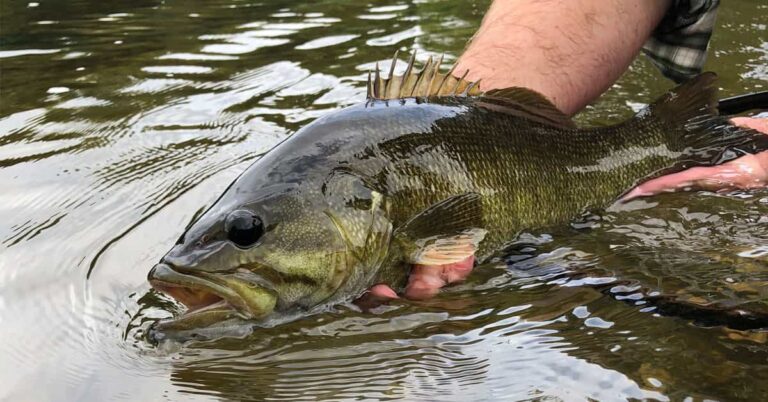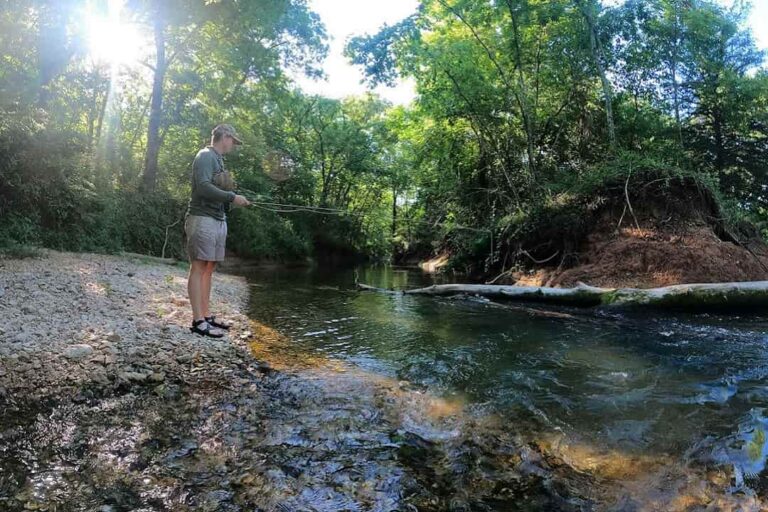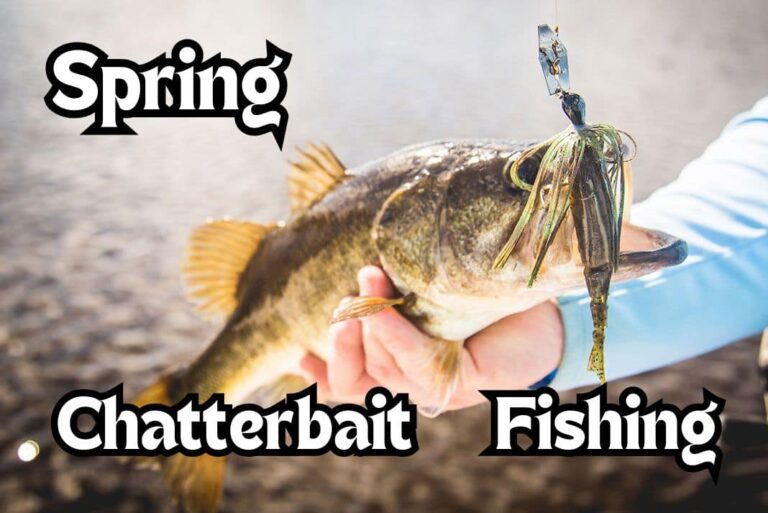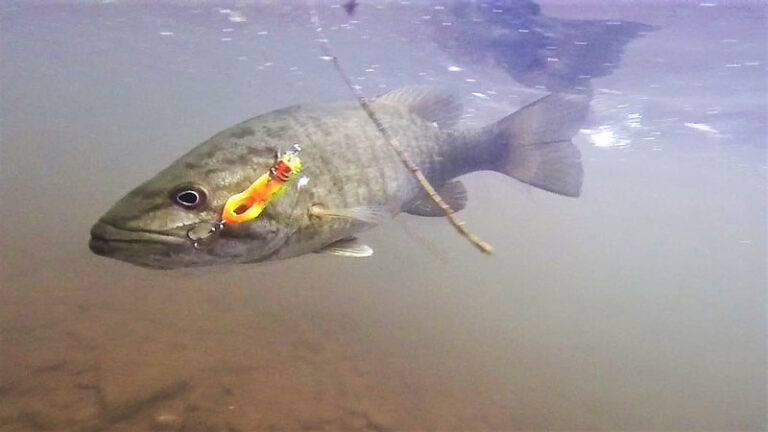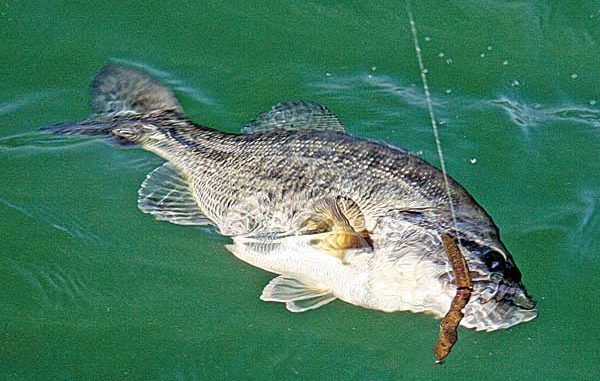5 Late Fall Bass Fishing Lures: Catching Bass in the Winter Transition
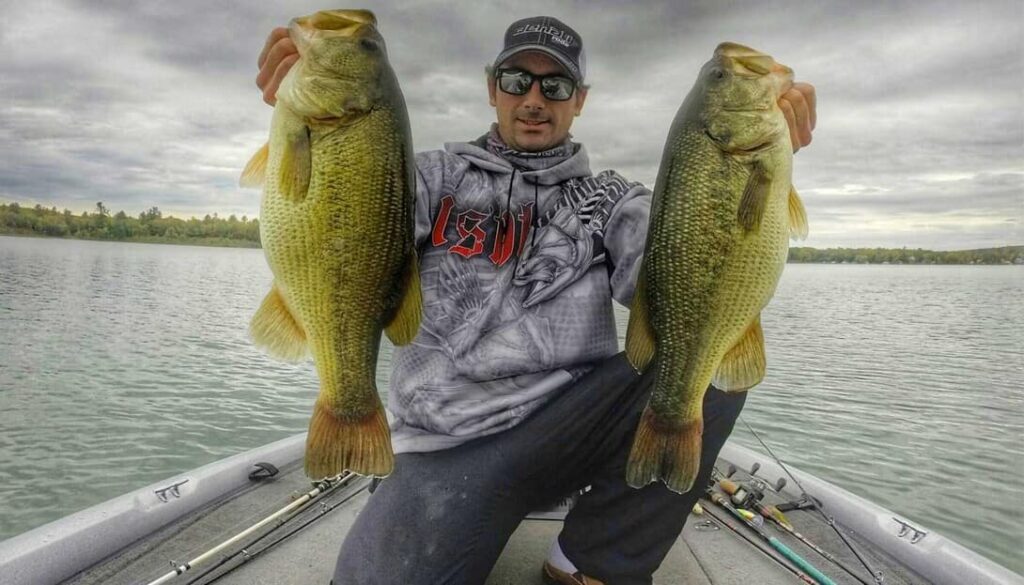
During the late fall, as it begins to transition into the winter months, many anglers have a hard time catch bass.
The lures or fishing strategies that had been working for the last couple of months just aren’t catching bass anymore.
So what lures do you need to be using in the late fall transition?
How Do You Catch Bass in Late Fall?
Throughout most of the fall, bass are extremely active. My philosophy is the faster the better.
I fish lure very fast and try to trigger reaction strikes from bass. As I get into the late fall and winter transition, this changes.
In the late fall, bass are still eating a lot, but are also beginning to move out a bit deeper and become more selective with what they eat.
Late fall bass primarily target schooling shad and pick off the weak or dying shad that get separated from the school.
What Lures to Use in Late Fall
During the late fall, you really want to use lures that imitate baitfish, and primarily shad.
Choosing shad imitations that can be fished a bit deeper and slower work the best during fall to winter transition.
Also Read: Early Morning Fall Bass Lures
1. Blade Bait
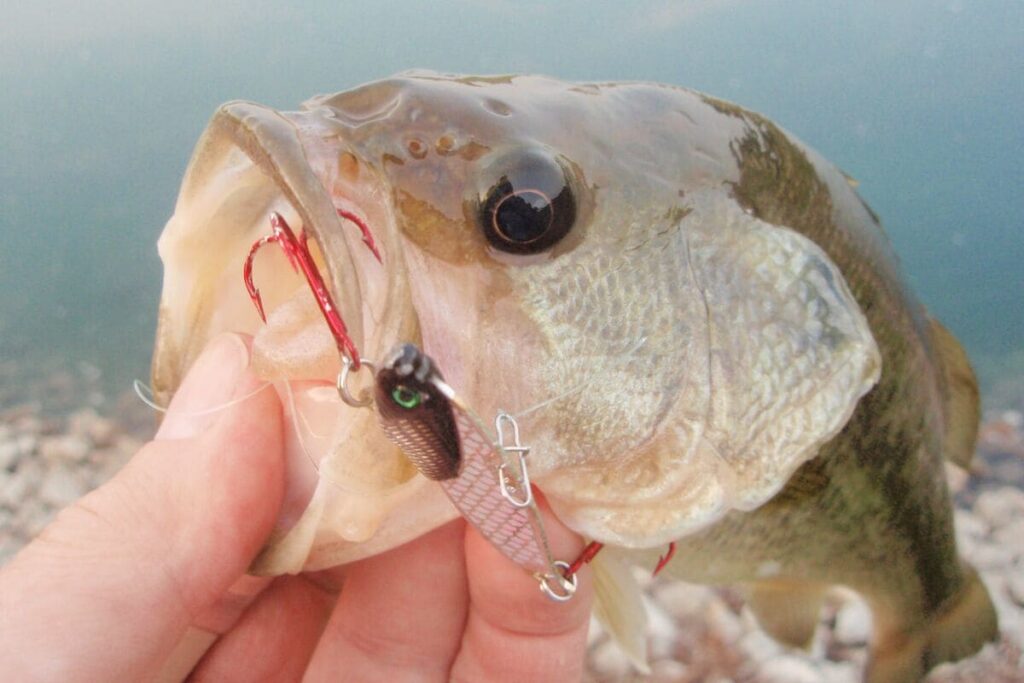
Blade baits almost seem too simple to work. They are essentially just a slab of metal in the shape of a baitfish with a weighted belly.
They have very similar action to a lipless crankbait, but the thinner profile is more subtle and displaces less water.
Blade baits also don’t make any sound like the beads and rattles in a lipless crankbait.
The more subtle and unique profile of a blade bait is a fantastic cold water lure.
Don’t get me wrong, a blade bait can catch bass all year round, but it really shines from the late fall to the early spring.
Also Read: How to Fish Blade Baits for Bass
2. Paddle Tail Swimbait
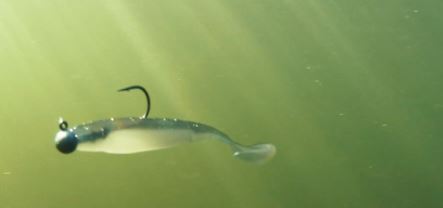
Since bass are becoming a bit more sluggish and picky about what they eat, finesse fishing techniques will start to shine.
A little paddle tail swimbait is my favorite finesse bait to fish during the late fall.
This is because bass are still active enough to chase after slow moving baits, and are looking for more realistic and enticing presentations.
Slow rolling a paddle tail swimbait through the mid to low water column allows you to cover enough water while also fishing slow enough to catch more lazy bass.
There are also tons of rigging options for finesse swimbaits that can match whatever water conditions you are fishing.
3. Glide Bait
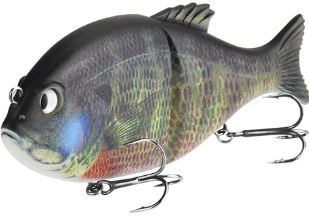
Big baits catch big bass. Glide baits are a relatively slow moving and giant baitfish imitation.
When I want to catch huge, late fall bass, I tie on a glide bait. During the late fall as bass transition into deeper waters and begin eating less.
They often make one last push to try and get in a bunch of food just before the winter sets in.
They are looking for a big and easy meal. Glide baits are exactly that.
A big, easy, and hyper realistic meal that persuades many huge bass to bite.
4. Single Colorado Blade Spinnerbait
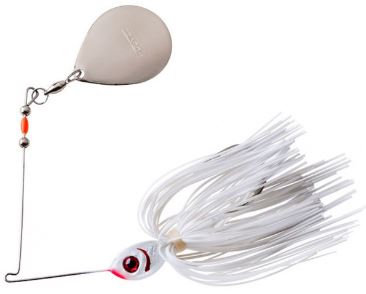
Spinnerbaits are a great fall bait, but as the water temperatures get real cold, the single Colorado blade spinnerbait really shines.
The Colorado blade puts off more vibration and resistance which allows it to be fished a lot slower.
A willow leaf blade works great in early fall, but has to be fished quickly to get the blades spinning.
Also, having only one blade allows you to keep the bait lower in the water column.
A double Colorado blade has too much rise and will come to the surface very easy.
A single Colorado blade spinnerbait can be fished slowly and low in the water where the bass are transitioning into.
Choosing the Right Spinnerbait Blade
5. Flat Deep Diving Crankbaits
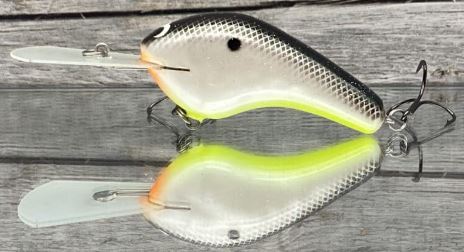
Deep diving crankbaits are able to get down to the depths that bass are heading towards.
They are also a reaction style baitfish imitation that will work great for some of the bass that are still a bit more active.
The flat crankbaits have a much tighter vibration and action compared to round body crankbaits that have wide wobbling actions.
When the water gets colder, baitfish are a bit less active and take up a tighter, more conservative action in the water.
This is why the tight action of flat crankbaits work so well. Lipless crankbaits have the same tight action.
Late Fall POND Bass Fishing
Bass act a bit different in small ponds compared to large lake systems.
Since small ponds don’t really have any deep water for these bass to transition into, they tend to stay in the same places for the most part.
This allows for bank fisherman to have success even in the cold winter months.
They will hold to the bottom of the water column, but won’t necessarily transition out into the middle of the ponds.
All the above lures will work great in late fall ponds, with one exception.
The deep diving crankbaits tend to dive too deep and get caught up in leaves, muck, and dead weeds that are sitting on the bottom.
I would swap out deep diving crankbaits and replace it with a swim jig.
The swim jig is extremely versatile and can mimic bluegill better than some of the other baits.
Not all ponds have shad, so the bass mostly target bluegill and baby bass during the fall months.
Swim jigs can be straight reeled, hopped, flipped into cover, or fished any other way that gets bass to bite.
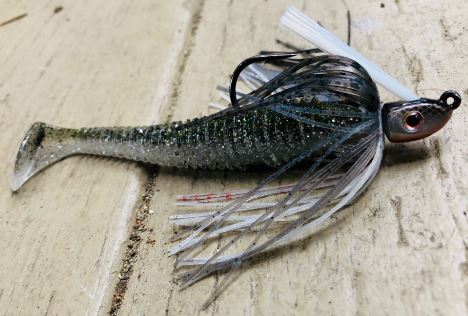
Also read: Best Winter Pond Bass Fishing Lures
When is the Late Fall?
The late fall is different depending on where you live in America.
But it is typically between early October to late November.
Going by water temperature, the late fall is typically considered when the water temperatures are between 50-55 degrees.
Reeling this In
The late fall scares off many anglers that think dropping water temperatures and cold fronts make it difficult to catch bass.
But do NOT be one of these guys. Just tweak your fishing lures and techniques to fit what the bass are doing.
Bass never stop eating. So as long as there are bass in a lake, you can catch them. Put on your jacket and get out there on the waters.
There are plenty of trophy bass waiting for you.

